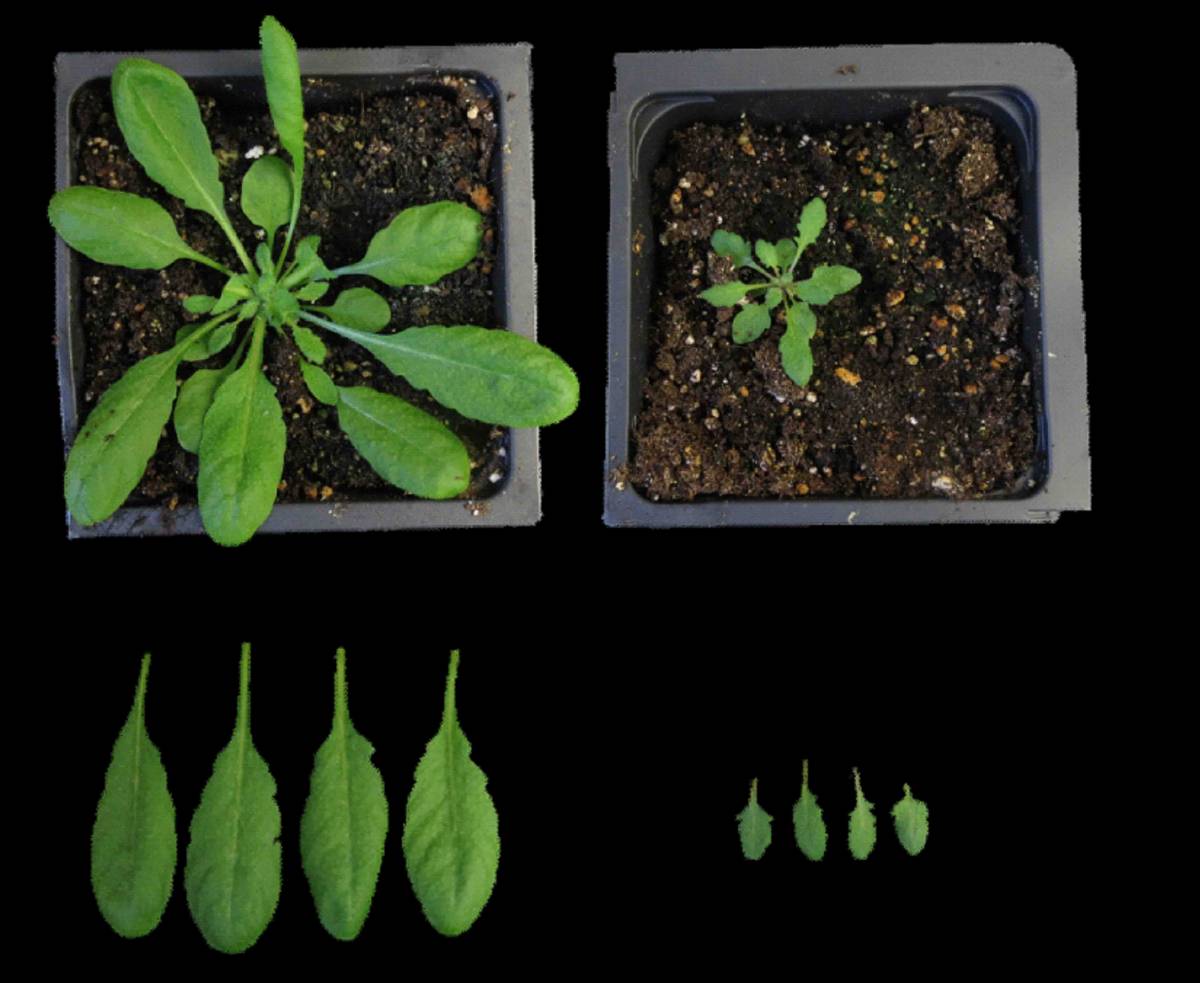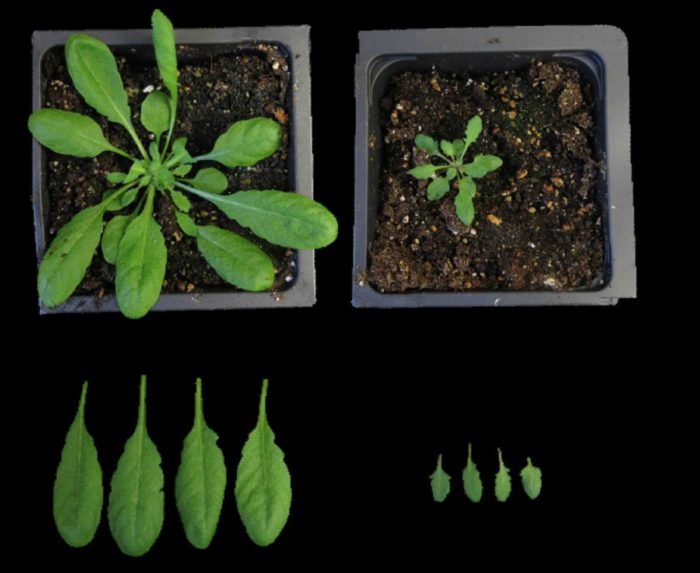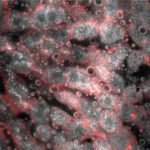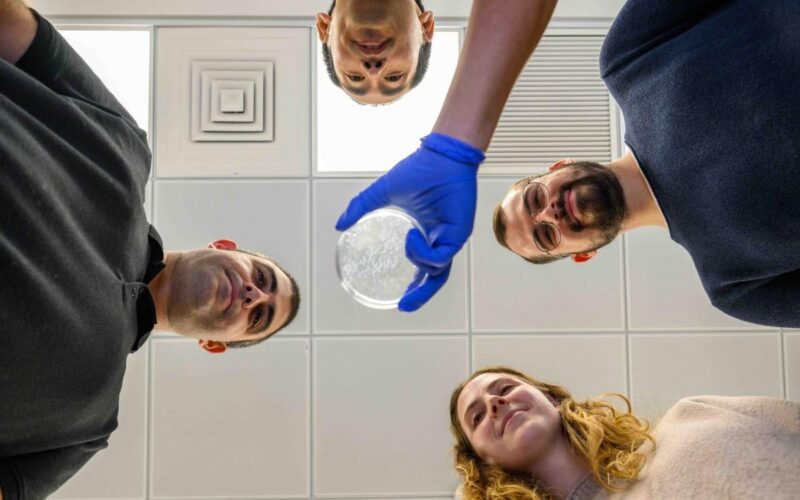
March 3, 2017
People might eat greens to lower their cholesterol levels, but contrary to common belief, most plants are not cholesterol-free.
Reported recently in Nature Plants, researchers at the Weizmann Institute of Science have now deciphered the biochemical reactions responsible for plants’ cholesterol production. The findings may make it possible to engineer plant species in a bid to obtain biochemical compounds that are derived from cholesterol.
Cholesterol has a bad rap for its role in heart disease. However it is the starting chemical for thousands of compounds, including drugs and substances important for human health. It is essential for the proper working of brain cells and a host of other vital cellular functions in the human body.
In plants, cholesterol molecules provide crucial building blocks for cellular membranes and for the protective layer on the leaf surface.
“Cholesterol levels in plants are on a different scale than those in, say, shrimp – in fact, they are hundreds or even thousands of times lower than in animals – but they are not negligible,” said Professor Asaph Aharoni of Weizmann’s Plant and Environmental Sciences Department.
Butter, for example, contains 2-5 grams of cholesterol per kilogram, and egg yolk – some 15 grams per kilogram. In soybean oil, cholesterol levels are 29 milligrams per kilogram – relatively high for a plant product, but still thousands of times lower than in butter; in coconut oil, they amount to just 14 milligrams per kilogram.
It has been more than 200 years since French chemists discovered cholesterol in human gallstones, and more than 50 years since the details of cholesterol production were revealed in animals; but how it is made in plants has been unknown.
In this new study, postdoctoral fellow Dr Prashant Sonawane and other members of Aharoni’s team focused on tomato, which contains about 0.3 to 0.5 milligrams of cholesterol per kilogram of plant tissue.
The scientists first identified the genes potentially involved in cholesterol production: They performed a large-scale analysis of gene expression and correlated the findings with the accumulation patterns of various compounds in the plant tissue. The researchers then determined the function of these genes by silencing them one by one. In additional experiments, they confirmed the function of the genes by incorporating them into mutant yeast cells lacking a particular enzyme and checking whether the enzyme’s activity had been restored.
Finally, they managed to reveal the entire pathway of cholesterol production in plants. It turned out to proceed in 10 steps involving 12 enzymes – the same ones as in animals, although the intermediate molecules created at each step differ from those in animals.
Next, in a tour de force of genetic engineering, the scientists introduced the genes for 11 of these enzymes into a model plant, Arabidopsis, which naturally produces very little cholesterol.
“We used an innovative synthetic biology technique for ‘stitching’ these genes together, to create a metabolic caravan of sorts,” said Aharoni.
Although the engineered plants grew to be smaller than usual, apparently because the manipulation interfered with their development, they made impressive quantities of cholesterol: 15 times more than normal.
This method may in the future help in the manufacture of a host of valuable cholesterol-based chemicals. These may include the sex hormone progesterone, used mainly in hormone replacement therapy, and other steroid hormones, as well as glycoalkaloids – the subject of intensive research in Aharoni’s lab – which are known to have anti-cancer properties.
Yet another prized substance is vitamin D which the Weizmann study revealed that the biochemical forerunner of this vitamin is synthesized at the next-to- last step of cholesterol production in plants.
“In the future we may be able to block this last step, causing large quantities of the forerunner molecule, called pro-vitamin D, to accumulate in the plant,” said Sonawane.
“This substance could then be purified from the plant. Alternatively, people may include pro-vitamin-D-rich plants in their diet, to help their bodies overcome deficiencies in this valuable vitamin.”
The research team included Sayantan Panda, Dr Jedrzej Szymanski and Hassan Massalha; staff scientists Dr Sergey Malitsky and Dr Ilana Rogachev, Efrat Almekias-Siegl, Dr Sagit Meir, Pablo D. Cárdenas and Athar Masri of Weizmann’s Plant and Environmental Sciences Department; and Meital Yona and staff scientist Dr Tamar Unger from the Dana and Yossie Hollander Center for Structural Proteomics at the Weizmann Institute. Also Dr Jacob Pollier, Dr Laurens Pauwels, Philipp Arendt and Professor Alain Goossens from Ghent University, Belgium; Drs Marina Petrikov and Arthur A. Schaffer from the Agricultural Research Organization – Volcani Center in Beit Dagan, Israel; Professor Hubert Schaller from Université de Strasbourg, France; Dr Avinash Kamble from Savitribai Phule Pune University; and Dr Ashok P. Giri from the Council of Scientific and Industrial Research – National Chemical Laboratory, Pune, India.
Professor Asaph Aharoni’s research is supported by the Leona M. and Harry B. Helmsley Charitable Trust; the Foundation Adelis; the Tom and Sondra Rykoff Family Foundation; the Lerner Family Plant Science Research Fund; the Monroe and Marjorie Burk Fund for Alternative Energy Studies; the Sheri and David E. Stone Fund for Microbiota Research; and Yossie and Dana Hollander, Israel. Professor Aharoni is the recipient of the André Deloro Prize; and he is the incumbent of the Peter J. Cohn Professorial Chair.

(l-r) Dr Jedrzej Szymanski, Efrat Almekias-Siegl, Dr Prashant Sonawane, Hassan Massalha, Dr Ilana Rogachev, Sayantan Panda, Dr Sagit Meir, Dr Sergey Malitsky and Professor Asaph Aharoni

Genetically engineered Arabidopsis plant (right), containing 11 genes involved in cholesterol production, makes 15 times more cholesterol than regular Arabidopsis (left)





